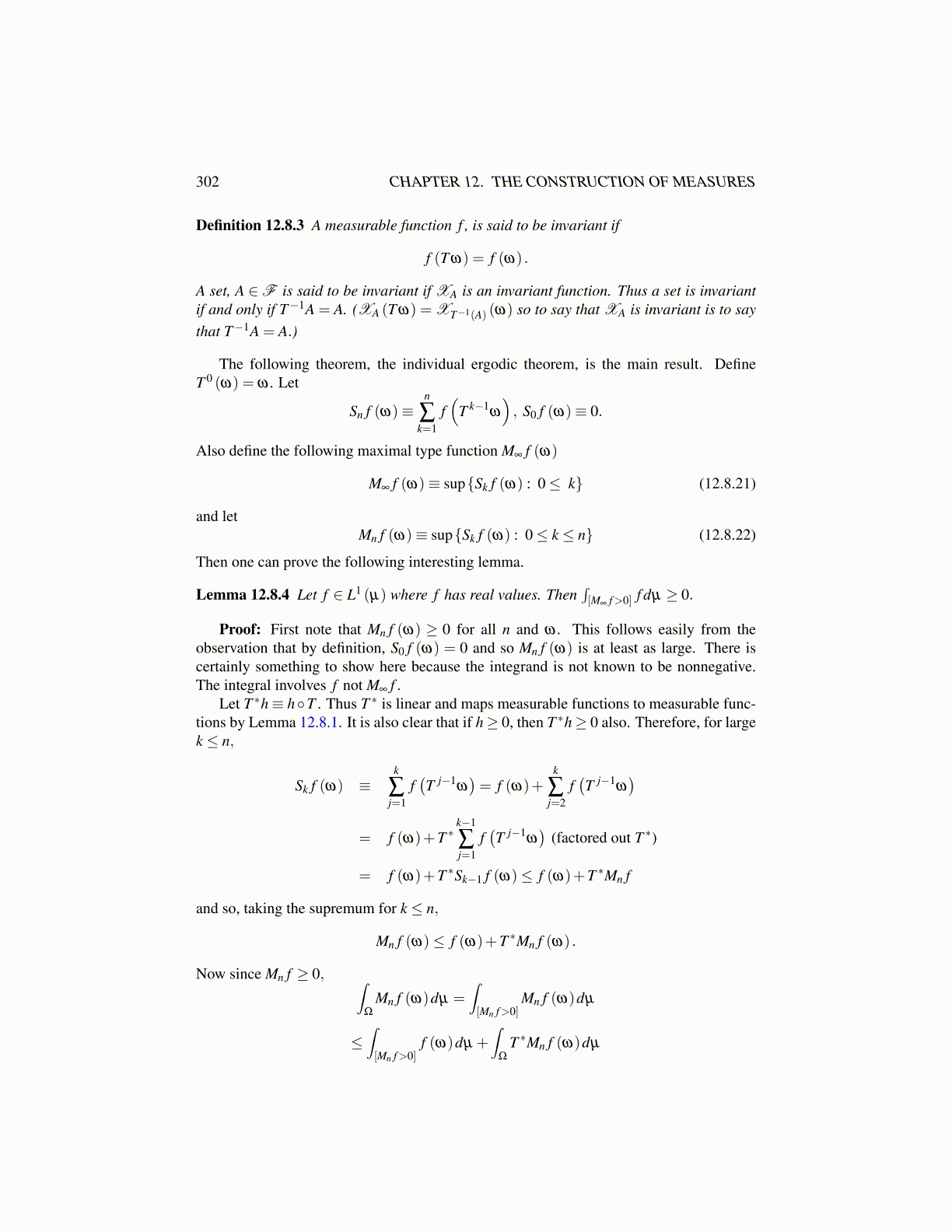
302 CHAPTER 12. THE CONSTRUCTION OF MEASURES
Definition 12.8.3 A measurable function f , is said to be invariant if
f (T ω) = f (ω) .
A set, A ∈F is said to be invariant if XA is an invariant function. Thus a set is invariantif and only if T−1A = A. (XA (T ω) = XT−1(A) (ω) so to say that XA is invariant is to saythat T−1A = A.)
The following theorem, the individual ergodic theorem, is the main result. DefineT 0 (ω) = ω . Let
Sn f (ω)≡n
∑k=1
f(
T k−1ω
), S0 f (ω)≡ 0.
Also define the following maximal type function M∞ f (ω)
M∞ f (ω)≡ sup{Sk f (ω) : 0≤ k} (12.8.21)
and letMn f (ω)≡ sup{Sk f (ω) : 0≤ k ≤ n} (12.8.22)
Then one can prove the following interesting lemma.
Lemma 12.8.4 Let f ∈ L1 (µ) where f has real values. Then∫[M∞ f>0] f dµ ≥ 0.
Proof: First note that Mn f (ω) ≥ 0 for all n and ω . This follows easily from theobservation that by definition, S0 f (ω) = 0 and so Mn f (ω) is at least as large. There iscertainly something to show here because the integrand is not known to be nonnegative.The integral involves f not M∞ f .
Let T ∗h≡ h◦T . Thus T ∗ is linear and maps measurable functions to measurable func-tions by Lemma 12.8.1. It is also clear that if h≥ 0, then T ∗h≥ 0 also. Therefore, for largek ≤ n,
Sk f (ω) ≡k
∑j=1
f(T j−1
ω)= f (ω)+
k
∑j=2
f(T j−1
ω)
= f (ω)+T ∗k−1
∑j=1
f(T j−1
ω)
(factored out T ∗)
= f (ω)+T ∗Sk−1 f (ω)≤ f (ω)+T ∗Mn f
and so, taking the supremum for k ≤ n,
Mn f (ω)≤ f (ω)+T ∗Mn f (ω) .
Now since Mn f ≥ 0, ∫Ω
Mn f (ω)dµ =∫[Mn f>0]
Mn f (ω)dµ
≤∫[Mn f>0]
f (ω)dµ +∫
Ω
T ∗Mn f (ω)dµ